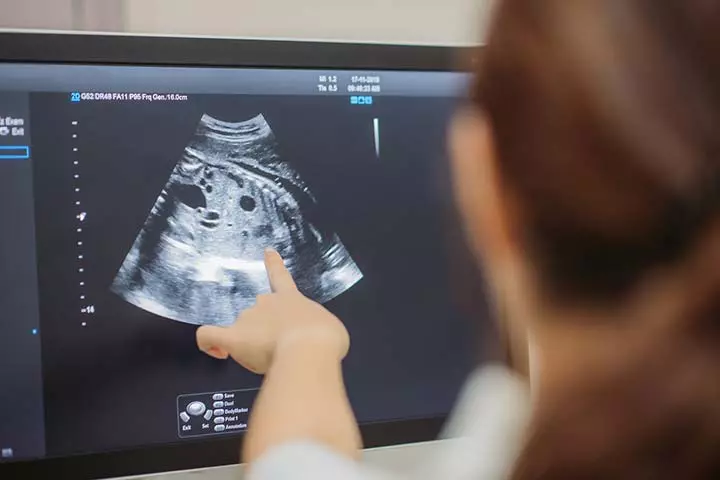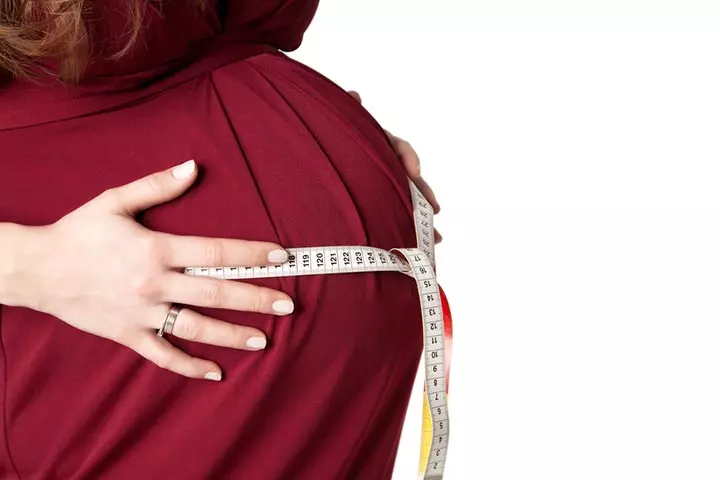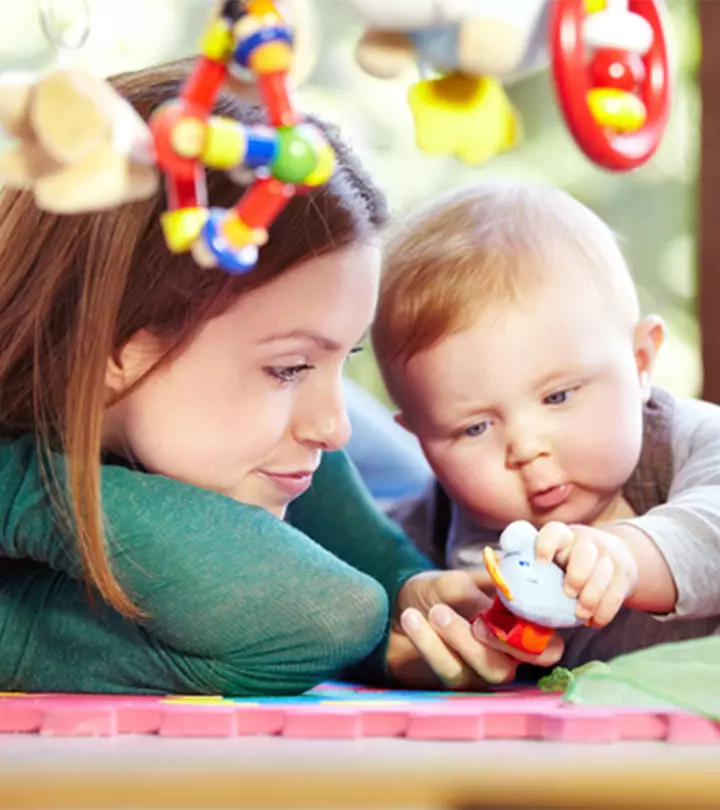
Image: iStock
Have you ever come across the term “hidden twin”? It is the surprise discovery of being pregnant with multiple fetuses at a very late stage, sometimes even right on the day of childbirth. Think of it as children starting their game of hide-and-seek in the womb even before they are born! It often comes as a great surprise to parents who had undergone tests and ultrasound and still the presence of the twin fetus remained undetected.
Advances in ultrasound and related technologies have made the phenomenon of a twin fetus remaining undetected a rare one. However, every once in a while, the image obtained from the ultrasound might be misleading or subject to misinterpretation. This can especially be the case during the first two months of pregnancy. However, the reasons for not being able to detect a second baby are not limited to just these. Let’s dive in and get to know about the curious case of “hidden twins’ in greater depth:

Image: IStock
During the screenings in the first trimester of pregnancy, the presence of twins may be hard to detect. What happens here is that one of the embryos gets overshadowed, right behind the visible one, unseen to the ultrasound scanner. It is also sometimes described as one child being “eclipsed” by the other. Here are a few reasons why the presence of the twin child might go undetected:
- The Embryos Occupy A Single Amniotic Sac:
Embryos are surrounded by a fluid cover known as an amniotic sac. In the case of normal twin babies, each of the embryos will have separate amniotic sacs from where they meet their nutrition needs. However, in certain cases, both the embryos end up in just one such sac. This is not an ideal situation and in fact, deemed dangerous for the survival of the babies (1). A single amniotic sac also makes it difficult to detect the presence of a second baby.
- Ultrasound Done In Early Days Of Pregnancy
Ultrasound results would be less accurate when performed during the first trimester of pregnancy. As such, if you’re ruling out the possibility of having a twin inside you with ultrasound reports of the initial days you might stand corrected. Better to have follow-up ultrasound tests during the mid and later months of pregnancy as well.
- Human Error
It’s totally possible that the lab technician misread or misinterpreted the pictures of the test. Medical professionals are human after all and once in a while, it’s possible that they fail to notice certain small aberrations. But having said that, it would be a rare case for such errors to occur multiple times.
- Tricky Position Occupied By The Embryo
In certain rare cases, nature plays its own tricks by placing the embryo in a position that is sneaky and hard to detect. The twin may lie behind the sibling perfectly covered and undetected. This can be a very effective trick in evading scans especially in the early stages of pregnancy.

Image: IStock
Ultrasounds are great, but they aren’t without imperfections. An early scan can prevent you from hearing your baby’s heartbeat. But by the time you get to the third trimester, it is pretty much impossible for a developing baby to remain hidden.
The doctor commonly uses a handheld fetal doppler on the expectant mother’s belly to detect the baby’s heartbeat. This procedure is called abdominal ultrasonography (2). One can hear their baby’s heartbeat for the first time during the first prenatal check-up. It is usually scheduled between the 12th and 14th week of pregnancy, or maybe later in some cases (3). In most women, a combination of several methods could be needed to accurately assess the baby’s heartbeat instead of a single process (4). However, a fetal heartbeat also stands the odds of being inaudible. It is because fetal heart monitors can fail to observe fetal heart position accurately (5) .
3. Can A Twin Hide Out In Your Uterus?

Image: Shutterstock
The 20-week ultrasound will check for multiple births and congenital disabilities in your baby (6). Generally speaking, the chances of a full-grown baby hiding in your uterus forever is pretty slim. A scan after 20 weeks will give a much more accurate result and confirm the presence of the twin if present.
4. What Are The Common Signs Of Twin Pregnancy?

Image: Shutterstock
Just in case an ultrasound fails to detect a twin in your womb, here are a few other signs to keep a watch on that suggest you could have a twin pregnancy:
- Heavy Morning Sickness Or Nausea: Hyperemesis Gravidarum is more common during twin pregnancies. Severe dehydration, fatigue, and poor weight gain could last for months (7).
- High Blood Pressure: If you are carrying multiples, you will be at a greater risk of developing high blood pressure-induced complications or disorders (6)..
- Gestational Diabetes: Moms with twin pregnancies are at a greater risk of suffering from increased blood sugar levels than singleton pregnancies (8).
- Large Fundal Height: When the baby measures bigger than expected for its gestational age, it could indicate a twin pregnancy (9) .
- Higher levels of hCG: During pregnancy, the level of the hormone Human Chorionic Gonadotropin (hCG) typically increases. This is helpful in stopping menstruation during pregnancy, protecting the uterine linings. The level of hCG is usually seen to be higher in the case of twin pregnancy (10). Once you get your hCG levels tested, consult your doctor and see if it falls within normal limits or whether it is higher than normal.
As seen from above, the chance of twin fetuses going unnoticed by medical experts is a rare occurrence. Ultrasound is pretty effective at accurately detecting the presence of twins. It’s usually the early weeks of pregnancy when the size of the embryo is too small, that the presence of a twin child is missed. As such, the logical action would be to undergo ultrasound scans more than once, spread across different periods of the pregnancy. As you near your delivery date and go in for more scans, all your confusion will disappear. Are you concerned that you may be carrying undetected fetuses? Speak to your doctor and verify your tests with an experienced medical practitioner before you come to any conclusion. Do tell us if you had a similar experience or know of someone who shares a similar story!
References
- Monoamniotic Twins (Sharing The Same Amniotic Sac): Do They Do Better If Born Early?
https://www.cochrane.org/CD008820/PREG_monoamniotic-twins-sharing-same-amniotic-sac-do-they-do-better-if-born-early#:~:text=Monoamniotic%20twin%20pregnancies%20are%20formed - Abdominal Ultrasound
https://www.mayoclinic.org/tests-procedures/abdominal-ultrasound/about/pac-20392738 - Pregnancy Week By Week
https://www.mayoclinic.org/healthy-lifestyle/pregnancy-week-by-week/in-depth/prenatal-care/art-20044882 - Assessment Of The Fetal Heart At 12-14 Weeks Of Pregnancy Using B-mode Color Doppler And Spatiotemporal Image Correlation Via Abdominal And Vaginal Ultrasonography
https://pubmed.ncbi.nlm.nih.gov/23479309/ - Paris: Passive And Continuous Fetal Heart Monitoring System
https://www.sciencedirect.com/science/article/abs/pii/S2352648319300510 - Twin Pregnancy: What Twins Or Multiples Mean For Mom
https://www.mayoclinic.org/healthy-lifestyle/pregnancy-week-by-week/in-depth/twin-pregnancy/art-20048161 - Nausea and Vomiting of Pregnancy and Hyperemesis gravidarum
https://www.nhp.gov.in/disease/gynaecology-and-obstetrics/nausea-and-vomiting-of-pregnancy-and-hypere - Gestational Diabetes And Fetal Growth In Twin Compared With Singleton Pregnancies
https://pubmed.ncbi.nlm.nih.gov/33872592/ - What’s The Significance Of A Fundal Height Measurement?
https://www.mayoclinic.org/healthy-lifestyle/pregnancy-week-by-week/expert-answers/fundal-height/faq-20057962 - The Thyrotrophic Role Of Human Chorionic Gonadotrophin (Hcg) In The Early Stages Of Twin (Versus Single) Pregnancies
https://pubmed.ncbi.nlm.nih.gov/9274703/
Community Experiences
Join the conversation and become a part of our nurturing community! Share your stories, experiences, and insights to connect with fellow parents.












